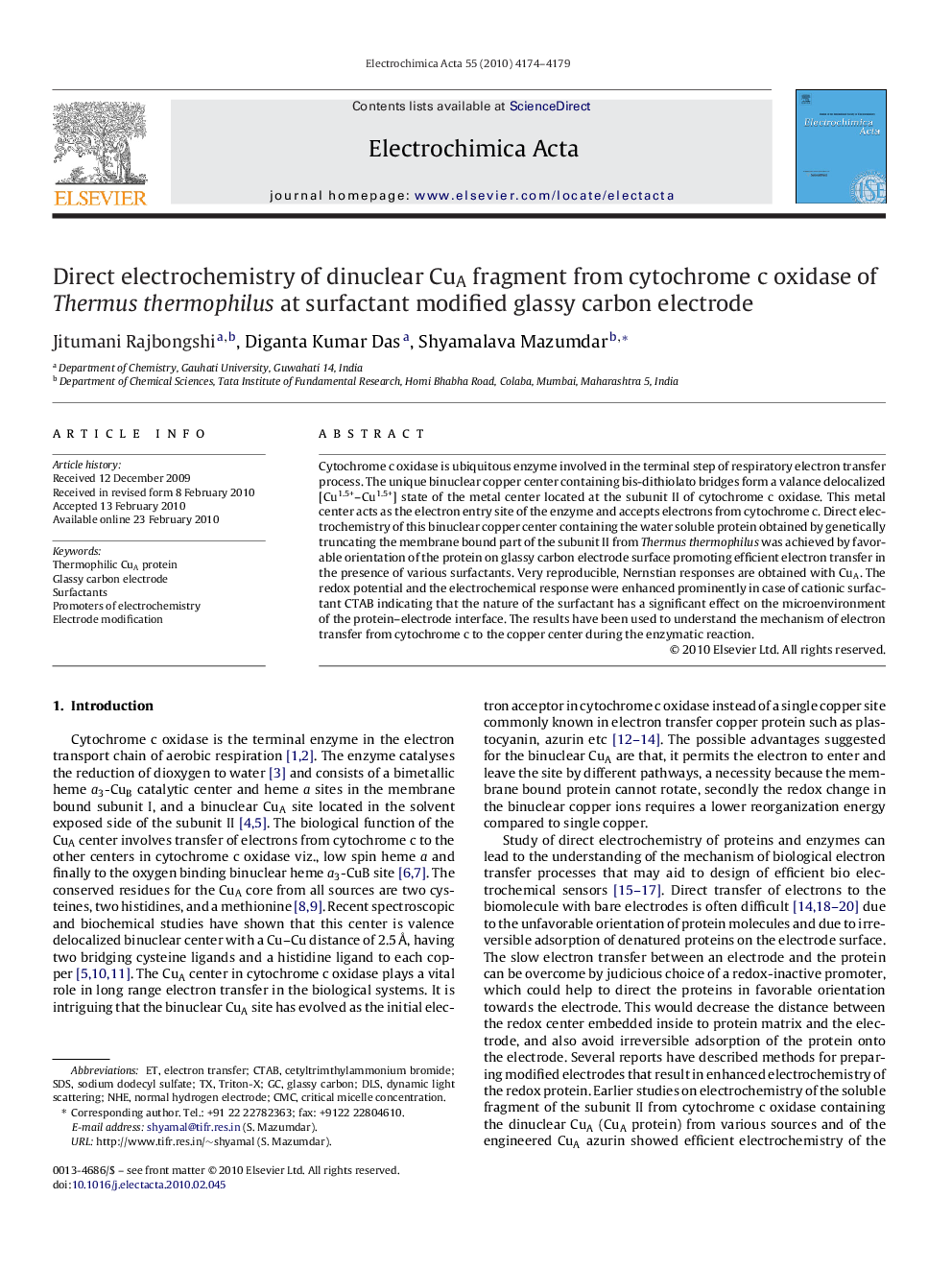| Article ID | Journal | Published Year | Pages | File Type |
|---|---|---|---|---|
| 191318 | Electrochimica Acta | 2010 | 6 Pages |
Cytochrome c oxidase is ubiquitous enzyme involved in the terminal step of respiratory electron transfer process. The unique binuclear copper center containing bis-dithiolato bridges form a valance delocalized [Cu1.5+–Cu1.5+] state of the metal center located at the subunit II of cytochrome c oxidase. This metal center acts as the electron entry site of the enzyme and accepts electrons from cytochrome c. Direct electrochemistry of this binuclear copper center containing the water soluble protein obtained by genetically truncating the membrane bound part of the subunit II from Thermus thermophilus was achieved by favorable orientation of the protein on glassy carbon electrode surface promoting efficient electron transfer in the presence of various surfactants. Very reproducible, Nernstian responses are obtained with CuA. The redox potential and the electrochemical response were enhanced prominently in case of cationic surfactant CTAB indicating that the nature of the surfactant has a significant effect on the microenvironment of the protein–electrode interface. The results have been used to understand the mechanism of electron transfer from cytochrome c to the copper center during the enzymatic reaction.
